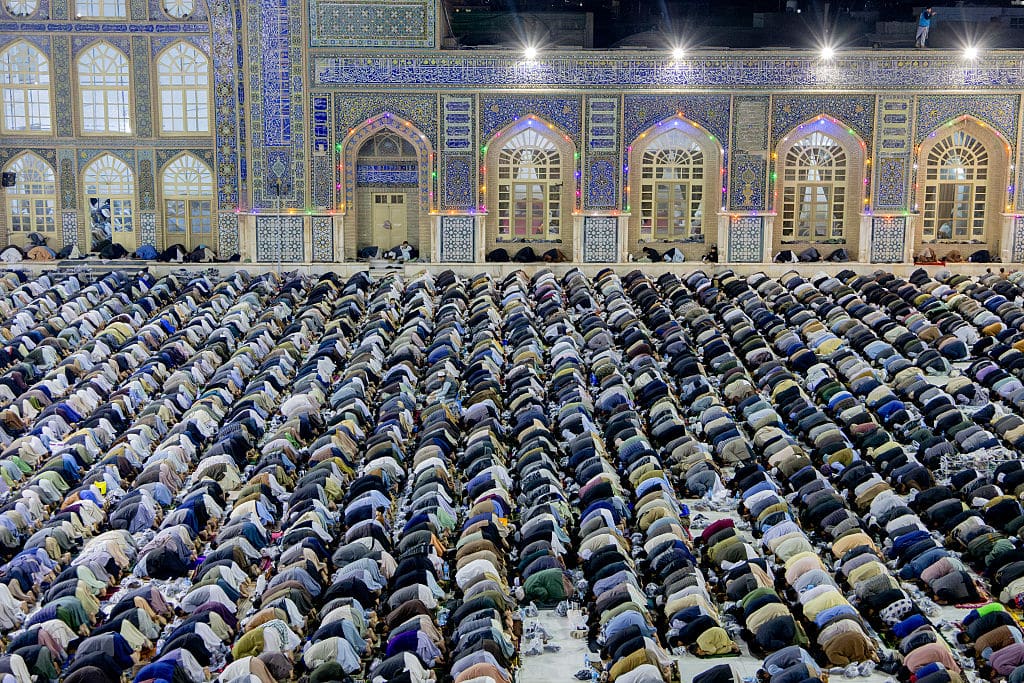The number of Muslims in the world and the number of people who do not have a religious affiliation both grew faster than the number of Christians globally between 2010 and 2020, reports the Pew Research Center.
According to a recently released report based on the US-based research centre's analysis of more than 2,700 censuses and surveys, while Christians (of all denominations, counted as one group) remained the world’s biggest religious group, they did not keep pace with global population growth during this decade.
Pew's <a href="https://www.pewresearch.org/religion/2025/06/09/how-the-global-religious-landscape-changed-from-2010-to-2020/"><mark style="background-color:rgba(0, 0, 0, 0)" class="has-inline-color has-vivid-cyan-blue-color">report</mark></a> notes that the number of Christians rose by 122 million, reaching 2.3 billion. Yet, as a share of the world’s population, Christians <em>fell</em> [Pew's emphasis] 1.8 percentage points, to 28.8 per cent.
Muslims were the fastest-growing religious group over the decade. The number of Muslims increased by 347 million – more than all other religions combined. As a result, the share of the world’s population that is Muslim rose by 1.8 points, to 25.6 per cent.
People with no religious affiliation – so-called “nones” –<strong> </strong>were the only category aside from Muslims that grew as a percentage of the world’s population.
The number of religiously unaffiliated people rose by 270 million, reaching 1.9 billion. The share of “nones” climbed nearly a full percentage point, to 24.2 per cent.
The United States, as of 2020, is the country with the world’s second-largest number of religiously unaffiliated people, after China, and surpassing Japan.
Collectively, 75.8 per cent of the world’s people identified with a religion as of 2020. The remaining 24.2 per cent did not identify with any religion, making people with no religious affiliation the third-largest group in this study, after Christians and Muslims.
At the same time, "due to disaffiliation from Christianity, there now are fewer Christian-majority countries and more countries with a religiously unaffiliated majority than there were in 2010," Pew highlights.
Its research also confirmed that sub-Saharan Africa is now home to the largest number of Christians, surpassing Europe.
As of 2020, 30.7 per cent of the world’s Christians live in sub-Saharan Africa, compared with 22.3 per cent in Europe. This change, Pew says, "was fuelled by differences in the two regions’ rates of natural increase (with much higher fertility rates in Africa than in Europe), as well as by widespread Christian disaffiliation in Western Europe". <br><br>Regarding the third Abrahamic faith – alongside Christianity and Islam – Jews "held steady as a share of the world’s population," reports Pew.
The number of Jews worldwide grew by nearly 1 million, reaching 14.8 million. In percentage terms, Jews were the smallest group in the study, representing about 0.2 per cent of the world’s population.
The report noted that the regional concentration of Jews has changed. As of 2020, 45.9 per cent of Jews live in the Middle East-North Africa region, while 41.2 per cent reside in North America. In 2010, North America was the region where the largest number of Jews lived.
This shift was primarily the result of Israel’s Jewish population growing from 5.8 million to 6.8 million between 2010 and 2020, through a combination of natural increase and migration.
Buddhists were the only major religious group that had fewer people in 2020 than a decade earlier. The number of Buddhists worldwide dropped by 19 million, declining to 324 million. As a share of the global population, Buddhists slipped by 0.8 points, to 4.1 per cent.
Hindus grew at about the same rate as the world’s overall population. The number of Hindus rose by 126 million, reaching 1.2 billion. As a proportion of the global population, Hindus held steady at 14.9 per cent.
All other religions combined (including Baha’is, Daoists, Jains, Sikhs, adherents of folk religions and numerous other groups) expanded in tandem with the rest of the world. Their share of the global population held steady at 2.2 per cent.
<em>Photo: Muslims at prayer at the Great Jami Mosque of Herat, Afghanistan, 28 March 2025. (Photo by MUSTAFA NOORI/Middle East Images/AFP via Getty Images.)</em>



